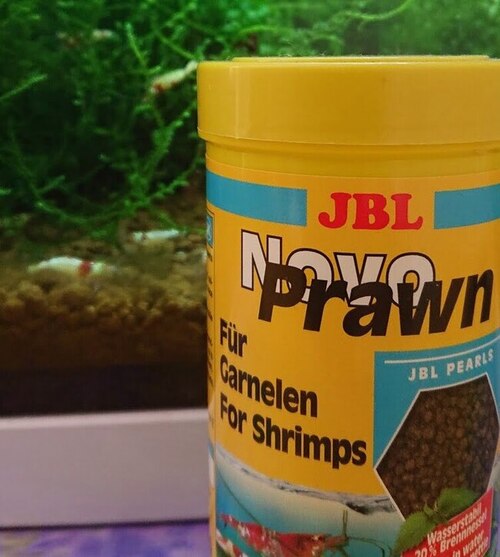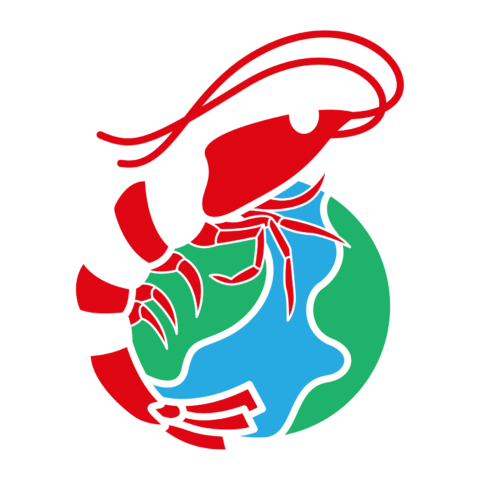If you’re new to caring for cherry shrimp, you might wonder if it’s possible to overfeed them. Also, what are the signs and how to fix any issues they cause?
It’s possible to overfeed cherry shrimp. Although the shrimp won’t overeat, the excess food you give them will end up uneaten. Uneaten food is also the result of your shrimp not liking the food you feed them. The uneaten food will release ammonia and nitrites, which are pollutants to shrimp.
These shrimp have some feeding preferences you can meet to avoid polluting the water. This article will cover some ways to feed and correct if you already have food pollution. Keep reading.
Overfeeding Your Shrimp Can Lead to Uneaten Food
Cherry shrimp will graze on anything. They’ll clean your tank, whether that means eating algae, leftover food pellets, or their own molted exoskeleton. Because of their diverse diet, they don’t need much food.
If you overfeed them, they won’t eat more than their fill, and the rest of the food will pollute the tank water. The pollutants are ammonia and nitrites.
To prevent altering the chemistry of the water, you’ll have to remove the uneaten food within a few hours. Regularly cleaning the filter sponge is also good so it doesn’t get clogged with food particles.
They need supplemented food like vegetables maybe once every several days or tiny pinches daily.
Sometimes cherry shrimp won’t eat because they’re full but because you need to break down the food. If you’re feeding vegetables, then boiling or freezing them first will soften the cellulose and make them more digestible for the shrimp.
Otherwise, you can introduce helpers to eat extra material in the tank. Cherry shrimp need clean water, so if they can’t keep up with the food in the tank, aquatic snails make good companions.

How To Avoid Consequences From Overfeeding
Overfeeding is less about the cherry shrimp and more about water pollution. But if you’ve been overfeeding and only just started to scoop up leftovers or feed less food, you still have options to fix the chemistry in your tank.
Adding plants is one way. Shrimp like to graze on and hide in them. Besides that, plants are good at absorbing ammonia, nitrites, and nitrates. They filter the aspects of water chemistry that overfeeding causes and cherry shrimp struggle.
The bacteria that eat the same pollutants also grow in these plant-filtered conditions, improving the water.
Crushed coral fixes pH issues that come with pollutants from overfeeding. Cherry shrimp favor the hard, mineral-concentrated water that crushed coral provides. The minerals help them build healthy exoskeletons, which later molt and become nutritious food that doesn’t pollute the tank. Crushed coral also stabilizes the fluctuations of pH between water changes.
Frequent water changes such as 10 percent of the total water also rid of food pollution. The shrimp are sensitive to water changes, but the 10 percent rule is gentle enough. Doing so once per week can make up for not doing other pollution-cleaning methods.
Cherry Shrimp Will Eat Boiled or Decayed Food
As grazers, cherry shrimp are least likely to abandon their food if fed in frequent, small doses. Good routines include daily or several times daily. Providing this way helps you see if you’re overfeeding, or if instead, they want a natural feeding routine.
Shrimp benefit from the all-around diet of commercial pellets as long as the food doesn’t have copper. Copper is poisonous to cherry shrimp.
Besides pellets, cherry shrimp do well with algae wafers.
While the shrimp are generally not picky about their food, they’re selective about the algae in an aquarium that they’ll eat. Fuzzy green algae and brown algae are favorites.
If you want to add vegetable produce, make sure they’re boiled or decaying. It helps the food sink, and it’s easier for shrimp to eat. Common vegetable choices include:
- Zucchinis
- Cucumbers
- Cauliflowers
- Brussel sprouts
- Carrots
- Peas
- Spinach
- Lettuce
- Red peppers
- Melons
Cherry shrimp are also detritivores, which means they love dead or decomposing organic material. This preference is why the shrimp make good fish tank janitors as long as you aren’t overfeeding them.
Conclusion
Caring for cherry shrimp can be easy. They eat all kinds of vegetables, algae, and detritus and keep your tank clean for other aquatic creatures. However, even these shrimp, if overfed, can inadvertently cause unhealthy water conditions.
Cherry shrimp won’t overeat. But if you overfeed, uneaten food will clog filters and release ammonia and nitrites, which are poisonous to shrimp. Boiling food, scooping out excesses, changing water, and adding plants help mitigate the pollution.
Helpfull information
- What are the perfect Cherry shrimp water parameters
- Can Cherry Red Shrimp Live Without an Air Pump?
- Can Cherry Shrimp and Taiwan Bees Breed?
- Are Cherry Red Shrimp Good Algae Eaters?
Sources
- Fish Laboratory: Cherry Shrimp: Care, Tank Mates, Molting, Breeding, Eggs
- IERE: The Ultimate Guide to Caring for and Keeping Cherry Shrimp
- Lambton Aquarium Creations: How to Care for Cherry Shrimp
Recent Posts
How Do Freshwater Shrimps Live? Freshwater shrimp are fascinating creatures that play a crucial role in aquatic ecosystems. They help maintain water quality by consuming algae and decomposing...
How Many Freshwater Shrimp Per Gallon? 4 Key Factors Freshwater shrimp are popular additions to aquariums, but many hobbyists wonder: how many shrimp can comfortably live in a gallon of water? The...

